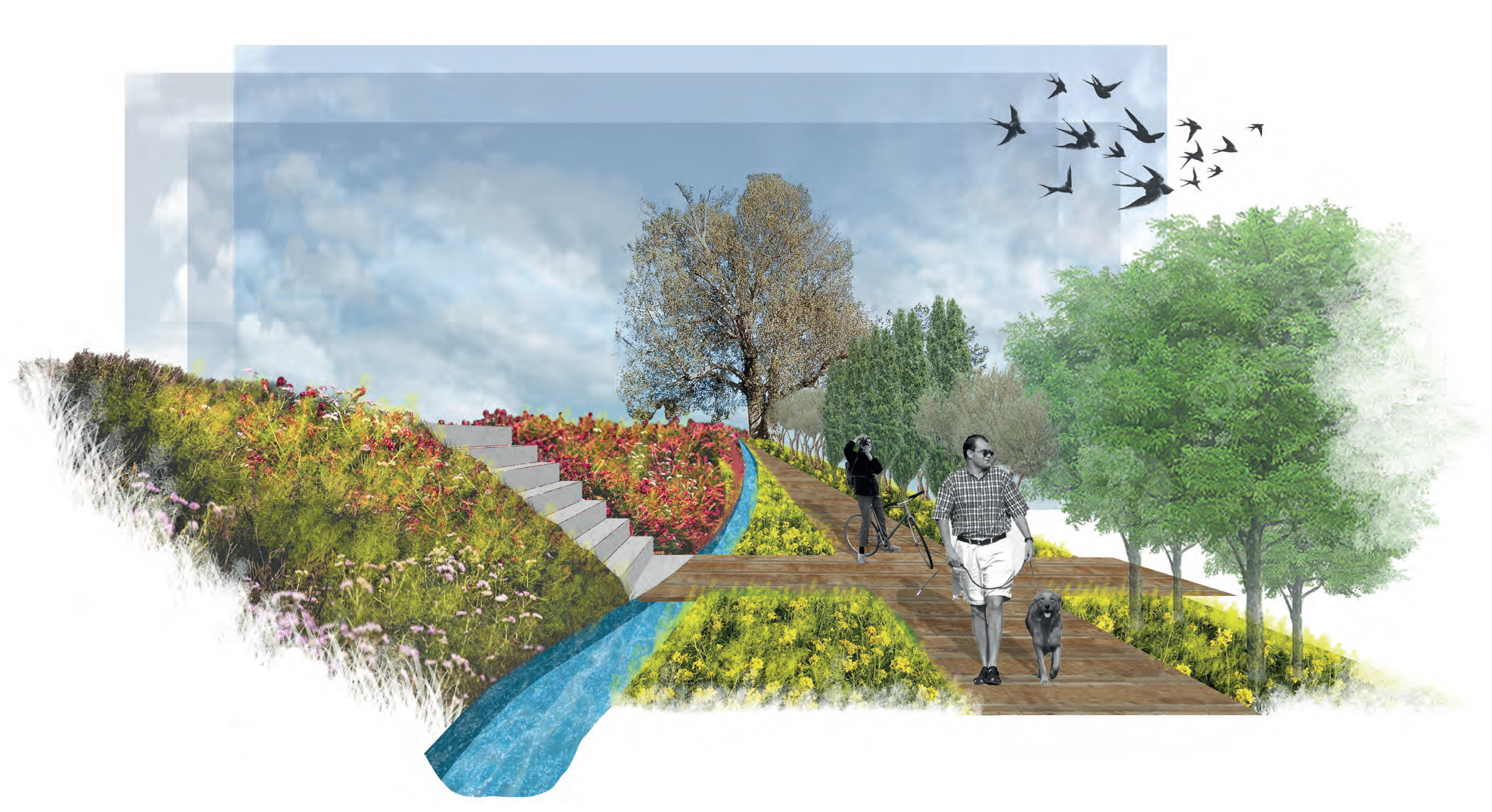
Public space in the agricultural periphery: landmarks as social poles
Monográfico de Urbanismo y Paisaje
University of Granada / E.T.S. de Arquitectura
The peri-urban landscape project is a contemporary issue that allows us to face the monocentrality of our cities. La Vega de Granada is being diminished by an understanding of the peri-urban subject to consumerism and functionalism. Shopping centers, large infrastructures and suburban residential fabrics gain territory for agricultural use and leave vacant areas due to the impact of their constructions. The scope of the project is located on the limit of the municipalities of Granada and Huétor Vega. The plot is cornered by the expansion of different neighborhoods and a highway, remaining as a residual space. However, it resists being invaded by the presence of unique landmarks such as the "Acequia del apricoque" and the "Plátano de la cacería de Santo Domingo", an ancient tree of great dimensions. It is from the recognition of the value of these elements that the project starts, understanding them as traces that speak of the past of this landscape and that are valued in the new project, making agricultural use coexist with new social demands. The place is still understood as a natural space, suitable for hosting activities related to this character, proposing sports courts, community orchards, gardens, walks, playgrounds and a small theater. The more urban facilities are established on the perimeter to be more in contact with the city and configure the main accesses. Reserving natural areas on the periphery to create public space allows us to fight climate change while creating community.
